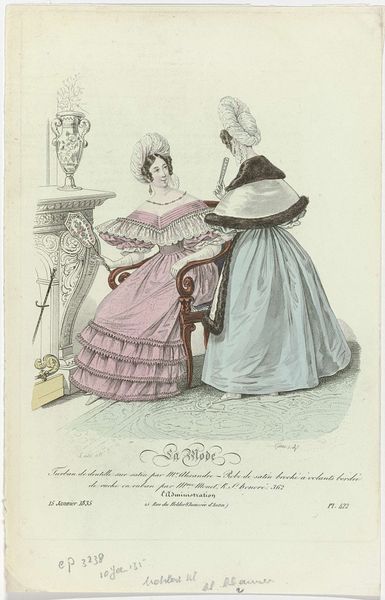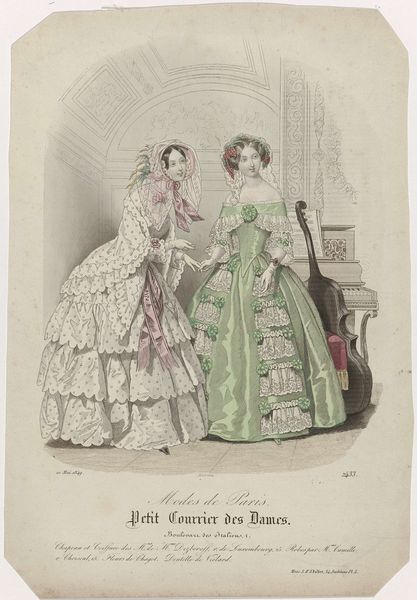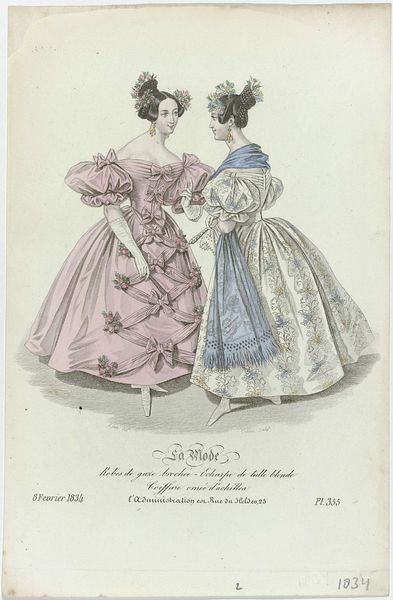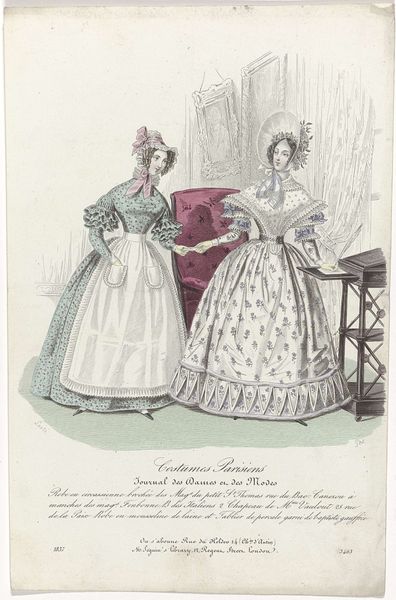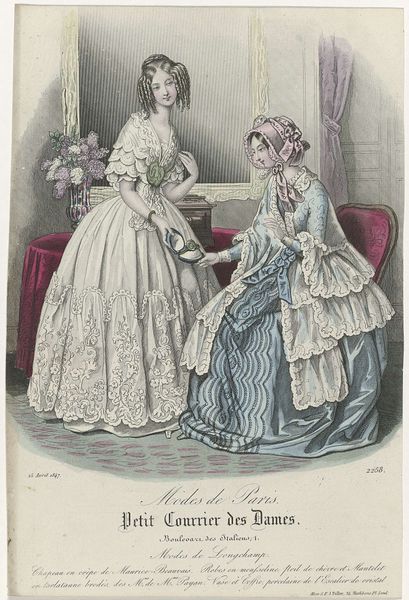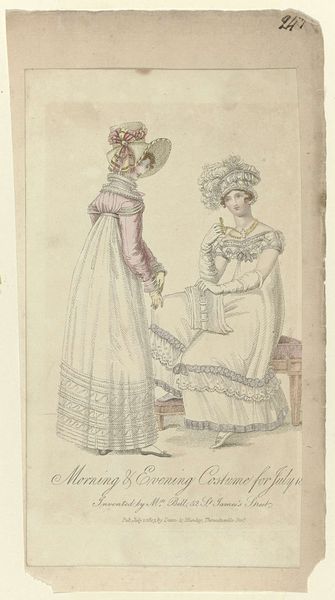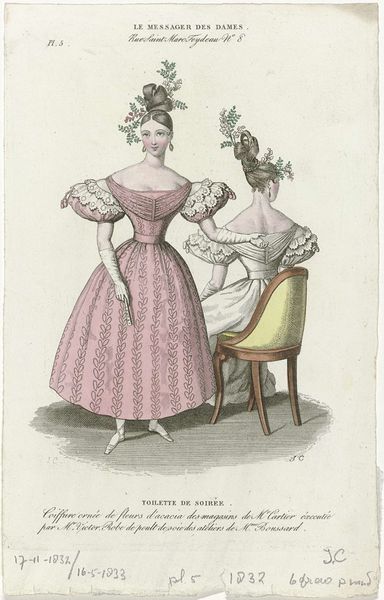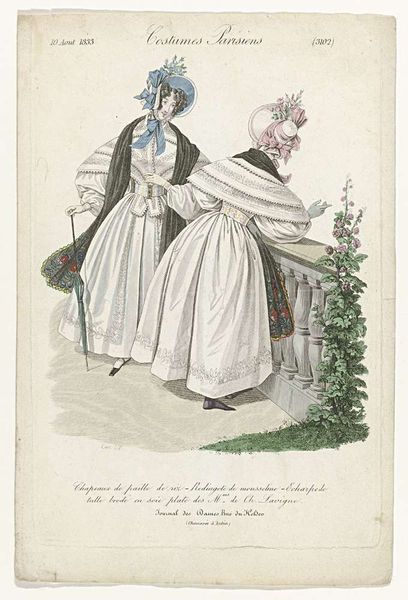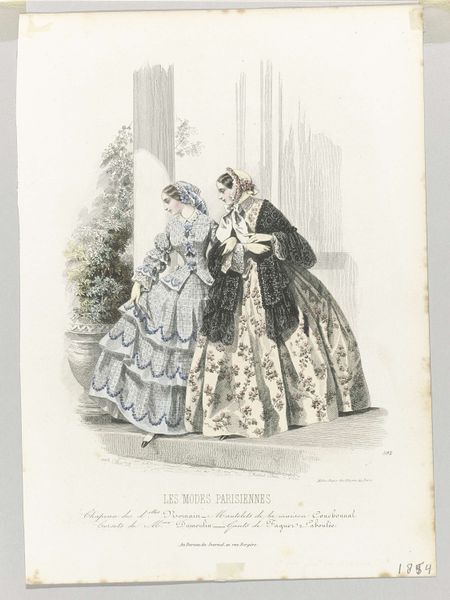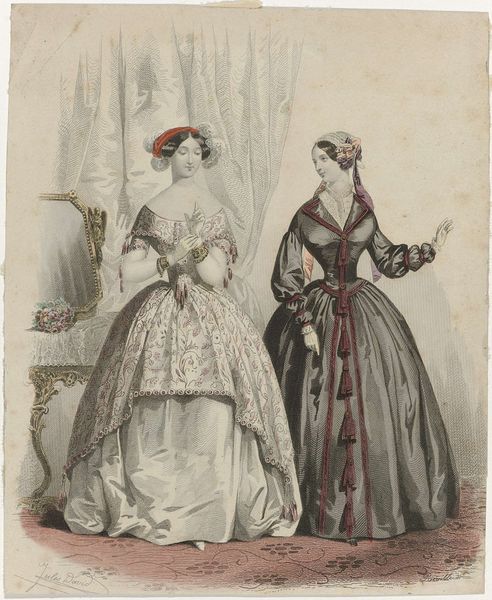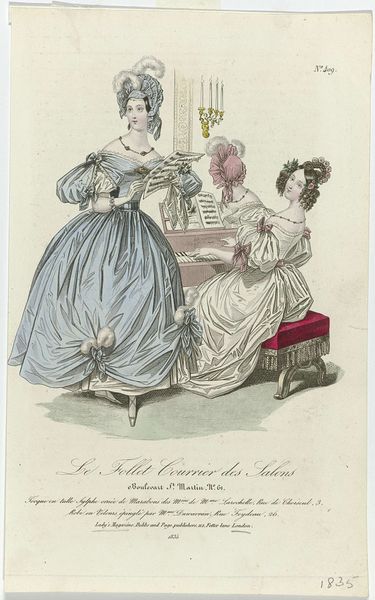
La Mode, 16 août 1834, Pl. 392 : Fichu garni de dentelle-tablier (...) 1834
0:00
0:00
print, engraving
#
portrait
# print
#
romanticism
#
genre-painting
#
history-painting
#
decorative-art
#
dress
#
engraving
Dimensions: height 228 mm, width 148 mm
Copyright: Rijks Museum: Open Domain
Curator: This print, titled *La Mode, 16 ao\u00fbt 1834*, or *Fashion, August 16, 1834*, comes to us from the hand of Jean Alexandre Allais. It's an engraving depicting two women and belongs to a broader genre painting style. Editor: It strikes me as almost deliberately restrained. The muted colors, the rather generic domestic scene... it's almost stifling. Is that the Romantic influence, perhaps? A push against excess? Curator: Interesting point. Let's unpack the social context. This image, printed in 1834, speaks volumes about the burgeoning fashion industry and the construction of femininity during the July Monarchy in France. Fashion prints weren't just about clothes; they were tools of social control, defining ideal womanhood through dress and deportment. Editor: So, beyond the pretty frocks, we're looking at an early form of propaganda? What’s interesting is who is included in these ideals—race and class dynamics, certainly. Were such images like this meant to dictate standards, and if so, whose standards were they? Curator: Exactly. Consider how the clothes are designed—the emphasis on the silhouette, the delicate lace, the emphasis of high, puffed sleeves and full skirts—all reinforce notions of domesticity and leisure. The bodies become vessels. The very act of consumption, driven by images like these, can be argued to support capitalist structures and class hierarchies, creating a whole dynamic centered around how you perform this ideal. Editor: Looking again, I'm also seeing subtle acts of resistance. The woman standing seems to interact with nature, with these vibrant red roses—is that a hint of rebellion or assertion beyond the parlor room? Also, I notice one holds a book, an assertion perhaps of their intellect, that may allow agency outside of their dictated constraints. Curator: That's a nuanced observation. Such gestures are interesting because they show us there could be multiple and often contested meanings within popular imagery. These images are rarely straightforward. The politics of fashion are always intertwined with broader socio-cultural power dynamics. The book especially signals that, perhaps, intellectuality and fashion weren't seen as mutually exclusive. Editor: It gives one pause to consider all the meanings embedded within something that, at first glance, appears as simply a decorative image, an innocent peek at fashion trends, it truly shows us how visual mediums shape the socio-political lens. Curator: Yes, it truly highlights the layers of meaning in even the most unassuming artwork. Fashion becomes not frivolous, but fundamentally interwoven with gender, class, and the broader forces shaping society.
Comments
No comments
Be the first to comment and join the conversation on the ultimate creative platform.
